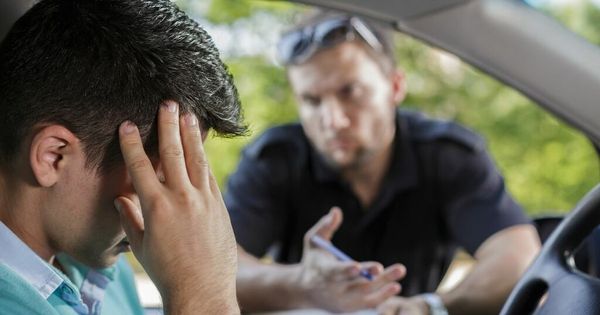
For a driver of a broken-down car waiting next to a main road with children, the sight of a recovery vehicle is an enormous relief, and a sign that the journey home can begin. But that journey may not be straightforward.
For many families, the trip may involve clambering in and out of the cabs of several flatbed trucks. There may also be difficulties caused by the time of day, where you are in the country when you break down, where you live, and even how long the driver who picks you up has been on the road.
On and off and on again
If a vehicle can’t be repaired, then drivers may be offered a lift home – but not necessarily on one truck. Families have found themselves being moved from one vehicle to another as their journey is broken into stages.
There are a number of reasons for this. One is that UK law limits the amount of time that truck drivers can spend on a public road to 10 hours a day and stipulates that a 30-minute break has to be taken after five and a half hours. If a driver is near the end of a shift or is due a break, this will limit the distance that he or she can travel.
Steve Jones of Comparison Creator, which provides details of breakdown cover to comparison sites such as Comparethemarket and Moneysupermarket, says many of the companies use networks of recovery vehicles which operate within geographical regions – such as the north-east or Wales – and only within those boundaries.
“If you move from one network to another, more often than not it will be passed over to the next network,” he says. Which means you and your car being switched to another breakdown vehicle.
The biggest players, the RAC and AA, operate their own network of breakdown vehicles, but both say that longer recovery journeys may have to be conducted in stages to comply with the law.
The AA says: “Some members’ journeys home may have to be broken up to comply with government drivers’-hours rules or to work with availability of recovery vehicles in the area.” For families hoping to get home, it’s not always clear beforehand that the journey may be a relay rather than a single drive: the small print in policies often promises to bring passengers home, but does not say how.
Know the distance
Something that may be in the terms and conditions, however, is a limit on how many miles you can be taken without having to pay.
When Stuart Anderson, who works in public relations, was 12 miles from home his car died, leaving him and his family at the side of the road. Because he had only basic breakdown cover, the recovery driver told him he could take him 10 miles free of charge, but after that he would have to pay a per-mile fee. “At the end, he dumped the car outside the house and got his card machine out,” says Anderson.

His problem was that his policy was limited to what is called “local recovery”. If you’re travelling longer distances, buying national cover is the way to ensure you can get all the way home wherever you break down. If the car can’t be fixed at the roadside, these policies should at least cover all the passengers being taken home, but they will cost more than a basic policy.
However, Jones points out that some providers will only take drivers to their home and not to the destination they were travelling to. “[If] I’m in Cardiff … and I break down in Bristol on the way to Edinburgh, and my vehicle can’t be repaired at the roadside, most decent policies would take me either back home or to Edinburgh,” he says. However, “there’s a lot of companies that don’t do that [Edinburgh] part of it: they restrict it.”
In a race to offer the most competitive prices, providers have been bringing in excess charges on some of their products, similar to insurance policies. This means that while a policy may appear cheap, should you end up having to call a truck to recover your car, a fee – typically of about £40 – will have to be paid.
If your vehicle breaks down at home or within a short distance of it – such as a quarter of a mile – your policy may not cover that either. “Home start” is an additional feature on some policies where a mechanic is sent to your house.
Beware of electric
Because of the new technology involved in electric vehicles, the amount of work which can be done on them at the roadside is limited, says Jones, and they often have to be taken to a garage.
“There are a lot of issues with electrics at the moment, so it is about making sure that you have the right cover,” he says. “Most people think that a van can turn up and give you a full charge, [but] the battery packs that they use on the vans would take a half-hour or 40 minutes just to get you to the next electric charge station. You have to make sure that you know what is covered and what is not.”
How much?
The average price of a breakdown cover package on the comparison sites is about £42, but the cheapest policies tend not to include features such as national cover, and may also include an excess fee. For a policy with national cover and no excess, the average price starts at about £50 a year, says Jones.
The AA says its cover begins at £59 for new customers on a basic policy, which includes having their vehicle towed to a local garage. The price goes up for features such as national recovery, onward travel and additional drivers. There is no extra charge for electric vehicles.
The RAC’s standard membership starts at £63.25 a year under a promotion that is currently running. The normal cost of this cover is £104.50. This includes cover for breakdowns at the home but does not include features such as onward travel or national recovery.
Among the recommended “top picks” on Martin Lewis’s MoneySavingExpert site is AutoAid’s policy, which starts at £61.49 for a driver and their spouse in any vehicle they are driving. It offers recovery to any UK destination if the vehicle cannot be repaired by the end of a working day.
• This article was amended on 12 May 2022. An earlier version said MoneySavingExpert “recommends” AutoAid’s policy; for the avoidance of any doubt, it has been clarified that the policy is one of a number featured in the site’s list of “top picks”.










